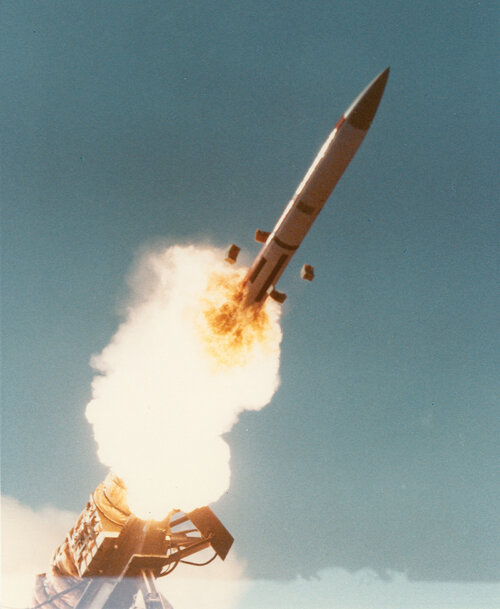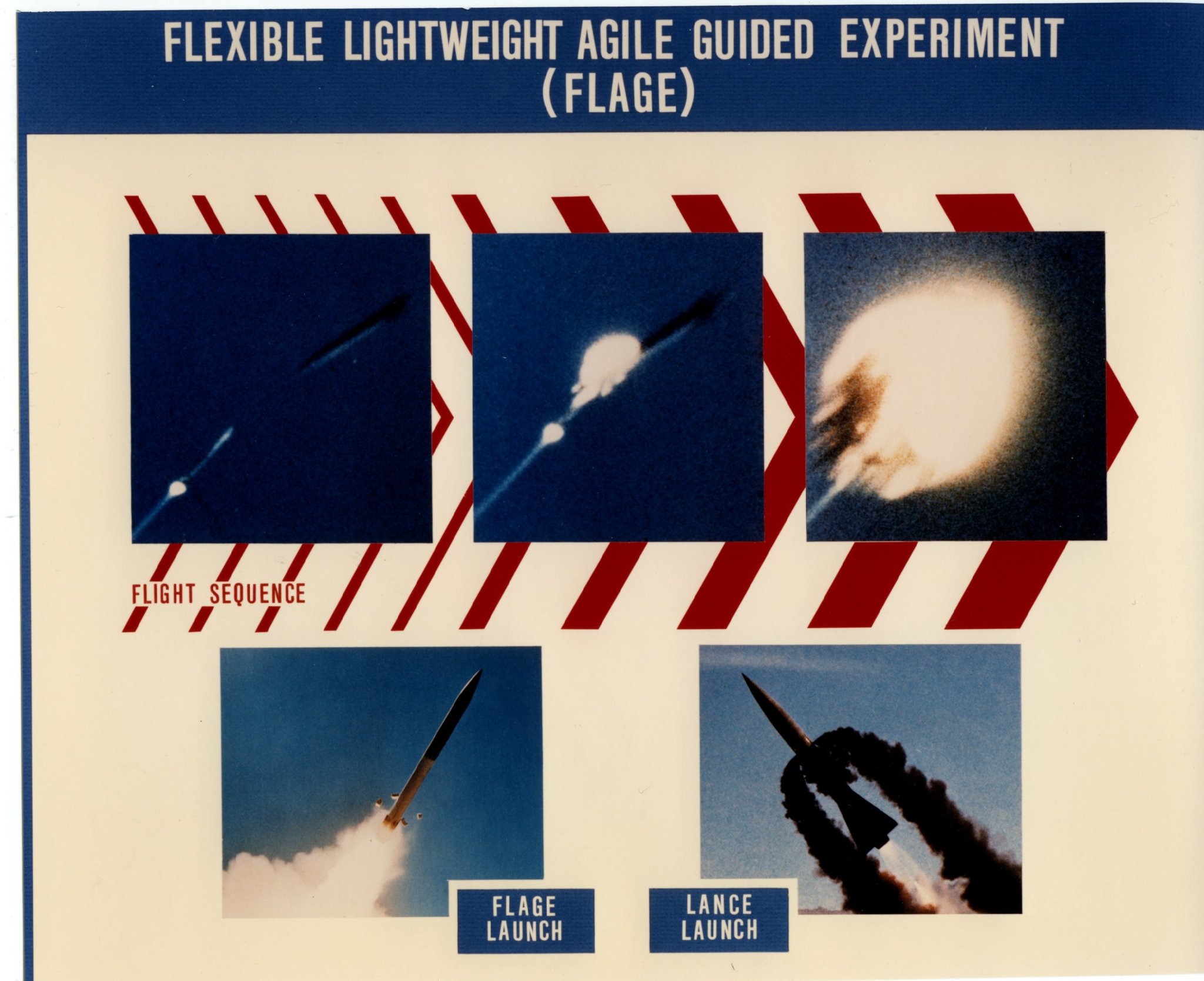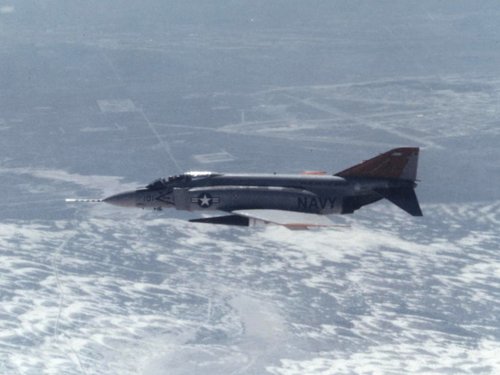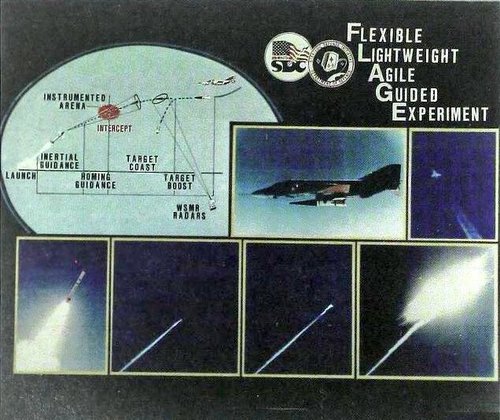- Joined
- 18 May 2019
- Messages
- 636
- Reaction score
- 1,567


FLAGE (flexible lightweight agile guided experiment) - formerly known as SR-HIT (small radar-homing intercept technology) -- was the predecessor of the current Patriot PAC-3 ERINT interceptor. FLAGE was a small (9 inches in diameter) highly-maneuverable, millimeter-wave radar-guided interceptor intended for relatively short-range intercepts well within the atmosphere. The missile spins during flight and its center of gravity and center of pressure are reportedly very close together, making it inherently unstable. 216 small solid rocket motors mounted in the missile body forward of its center of gravity were used to achieve very high maneuverablity (reportedly about 100 Gs).
***January 20, 1984. First flight test. An unguided ballistic trajectory flight to test missile performance and stability. Reportedly a success. First of a planned series of nine flight tests.
***March 15, 1984. Second flight test. Non-homing test in which the missile was to make a series of six pre-programmed maneuvers. Missile became unstable during second maneuver, and its radome and fins were torn off. Prior to the third test, ballast was added to improve the missile's aerodynamic static margin.
***November 29, 1984. Third flight test. Non-homing test. The missile reportedly successfully executed a series of pre- planned maneuvers.
***Date?? Fourth flight test. Test was to be against a stationary target suspended from a balloon.
***April 20, 1986. Fifth flight test. Target was a 44 inch diameter aluminum sphere held in place at 12,000 feet (3.7 km) altitude by a balloon. Test was a success, with missile passing through the target.
***June 27, 1986. Sixth flight test. First intercept attempt against a simulated missile target, and the interceptor hit the target. The intercept took place 7 seconds after the interceptor launch at an altitude of about 12,000 feet (3.7 km). There was no up-link to interceptor after its launch. At intercept, FLAGE speed was 3,200 ft/sec (0.98 km/sec) and the target speed was 3,800 ft/sec (1.16 km/sec). The target was launched from an airplane and reportedly had an RCS of about 1 square meter. At the time of test, it was described as the sixth test in a series of nine.
***May 21, 1987. Seventh flight test, second intercept attempt. The FLAGE successfully intercepted a Lance ballistic missile (said to simulate a Soviet SS-21 missile). The Lance reportedly had a much smaller radar cross section than the previous targets. The intercept took place seven seconds after the FLAGE launch, at an altitude of 12,000 feet (3.7 km). At intercept, FLAGE speed was 3,200 ft/sec (0.98 km/sec) and the target speed was less than 3,000 ft/sec (0.91 km/sec). The FLAGE radar reportedly acquired the target 2 seconds before the intercept and 60 of the 216 small solid rocket motors were fired during the flight.
Following the seventh flight test, it was reported that a second flight against a Lance missiles would be attempted in July 1987, and that a third test might be conducted after the data from the first two tests against a Lance were analyzed. However, I have not found anything indicating that either test occurred.
Last edited:


